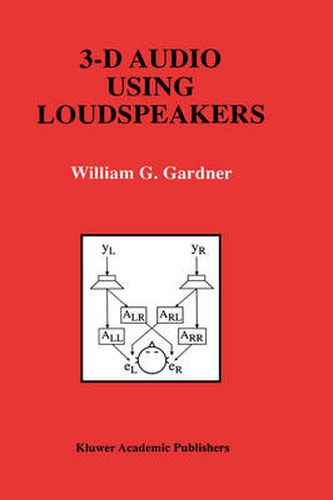Readings Newsletter
Become a Readings Member to make your shopping experience even easier.
Sign in or sign up for free!
You’re not far away from qualifying for FREE standard shipping within Australia
You’ve qualified for FREE standard shipping within Australia
The cart is loading…






This title is printed to order. This book may have been self-published. If so, we cannot guarantee the quality of the content. In the main most books will have gone through the editing process however some may not. We therefore suggest that you be aware of this before ordering this book. If in doubt check either the author or publisher’s details as we are unable to accept any returns unless they are faulty. Please contact us if you have any questions.
This volume is concerned with 3-D audio systems implemented using a pair of conventional loudspeakers. A well-known problem with these systems is the requirement that the listener be properly positioned for the 3-D illusion to function correctly. This book proposes using the tracked position of the listener’s head to optimize the acoustical presentation, thus producing a much more realistic illusion over a larger listening area than existing loudspeaker 3-D audio systems. Head-tracking can be accomplished by applying pattern recognition techniques to images obtained from a video camera. Thus, an immersive audio environment can be created without donning headphones or other equipment. The text discusses the theory, implementation, and testing of a head-tracked loudspeaker 3-D audio system. Crosstalk cancellers that can be steered to the location of a tracked listener are described. The objective performance of these systems has been evaluated using simulations and acoustical measurements made at the ears of human subjects. Many sound localization experiments were also conducted; the results show that head-tracking both significantly improves localization when the listener is displaced from the ideal listening location, and also enables dynamic localization cues. Much of the theory and experimental results presented are also applicable to loudspeaker 3-D audio systems in general, not just head-tracked ones. The book should be of interest to researchers studying virtual acoustic displays, and the engineers developing the same.
$9.00 standard shipping within Australia
FREE standard shipping within Australia for orders over $100.00
Express & International shipping calculated at checkout
This title is printed to order. This book may have been self-published. If so, we cannot guarantee the quality of the content. In the main most books will have gone through the editing process however some may not. We therefore suggest that you be aware of this before ordering this book. If in doubt check either the author or publisher’s details as we are unable to accept any returns unless they are faulty. Please contact us if you have any questions.
This volume is concerned with 3-D audio systems implemented using a pair of conventional loudspeakers. A well-known problem with these systems is the requirement that the listener be properly positioned for the 3-D illusion to function correctly. This book proposes using the tracked position of the listener’s head to optimize the acoustical presentation, thus producing a much more realistic illusion over a larger listening area than existing loudspeaker 3-D audio systems. Head-tracking can be accomplished by applying pattern recognition techniques to images obtained from a video camera. Thus, an immersive audio environment can be created without donning headphones or other equipment. The text discusses the theory, implementation, and testing of a head-tracked loudspeaker 3-D audio system. Crosstalk cancellers that can be steered to the location of a tracked listener are described. The objective performance of these systems has been evaluated using simulations and acoustical measurements made at the ears of human subjects. Many sound localization experiments were also conducted; the results show that head-tracking both significantly improves localization when the listener is displaced from the ideal listening location, and also enables dynamic localization cues. Much of the theory and experimental results presented are also applicable to loudspeaker 3-D audio systems in general, not just head-tracked ones. The book should be of interest to researchers studying virtual acoustic displays, and the engineers developing the same.